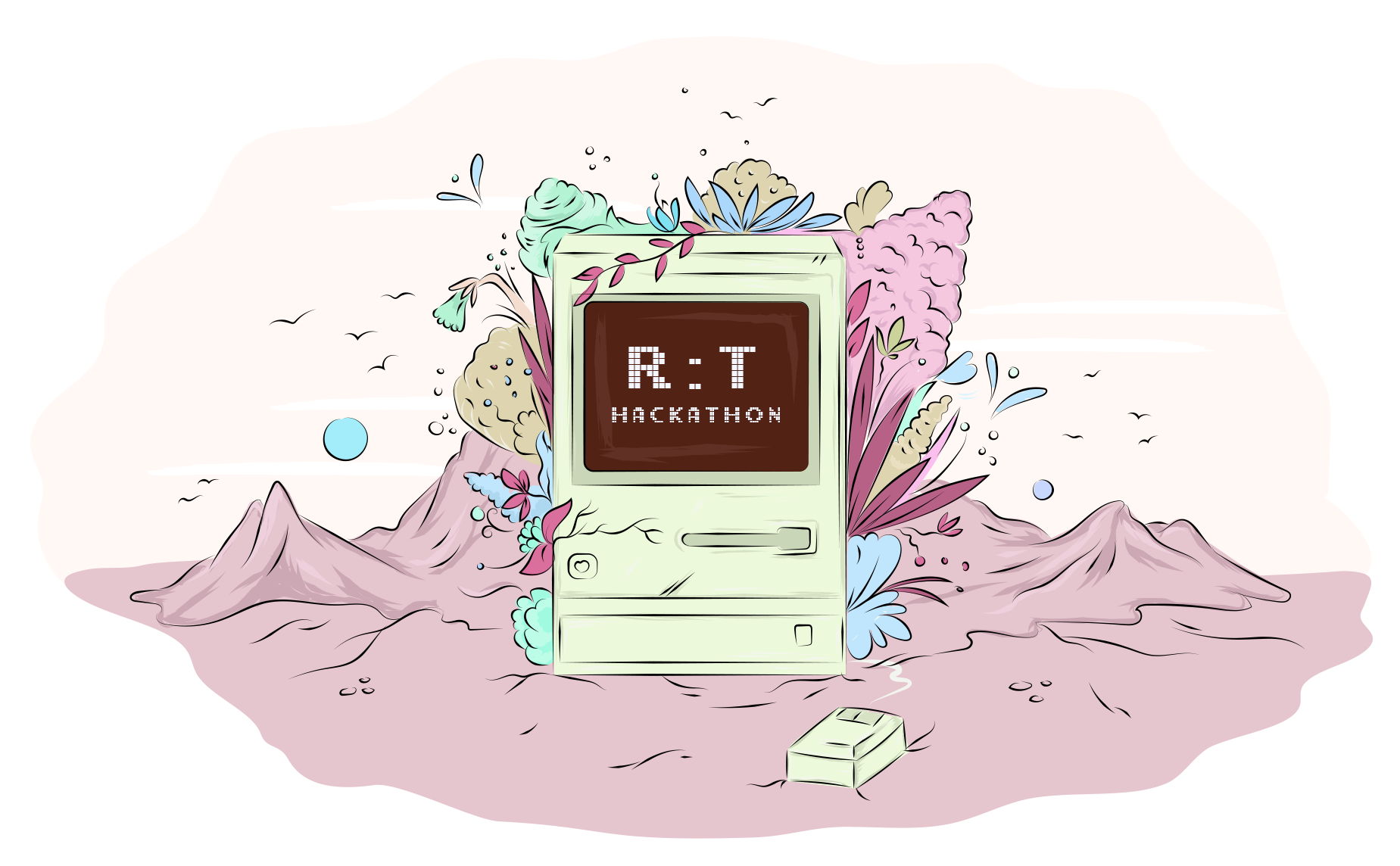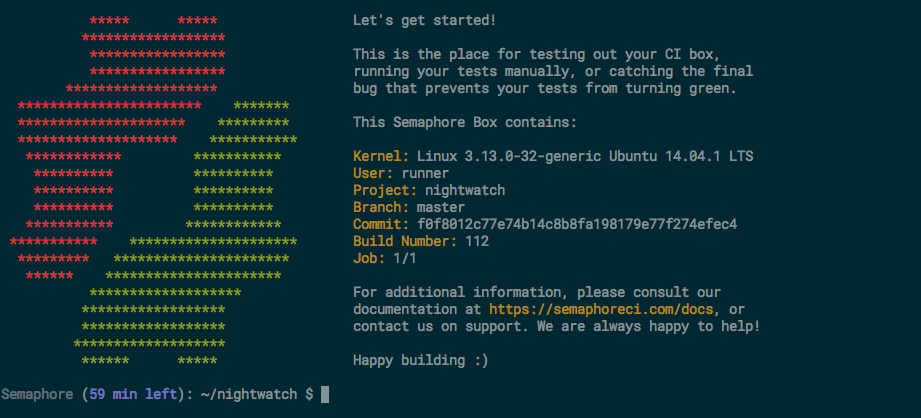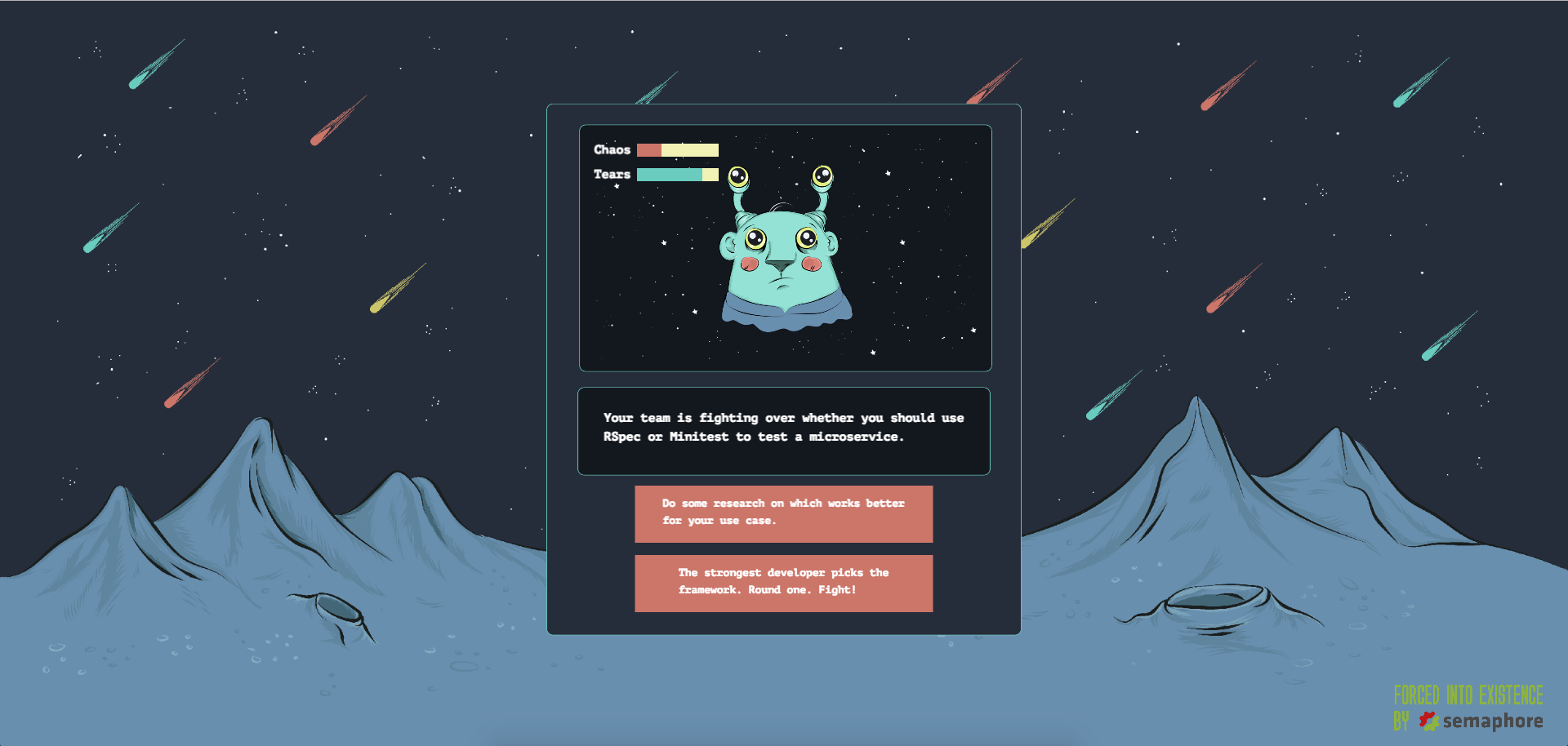Dunja Radulov wrote this on January 24, 2017
Semaphore Winter '16 Hackathon
The end of each year is a time to make plans for the following year and get inspired to work on new and exciting things in the year ahead. In December, we decided to organize a Semaphore hackathon for the entire company to celebrate the end of 2016 by getting creative.
People pitched their ideas and others voted with their feet by joining the projects they were most interested in. We split into multidisciplinary teams that had three days to capture new ideas and have fun making them a reality. Keep reading to find out what are the projects we came up with, what we learned working on them, and what are some of the outcomes of our first internal hackathon.

Improving the Semaphore SSH session
Team members: Ervin, Igor, Marko, Milan, Milica and Sneha
The Semaphore SSH session proved to be a popular asset for debugging builds and deployments. From the start, there were things we wanted to improve, but the team was short on time, and these changes weren’t very high on our list of priorities, so our team decided to work on some improvements during the hackathon.
The most obvious thing we wanted to improve was the lack of contextual information, e.g. the build which is currently checked out in the session and time until completion. We decided to add a few extra touches which would provide this information right off the bat. Another pain point we wanted to address is copy-pasting the build commands into the SSH environment. The utility addressing this shortcoming is soon to be released.

We played around with a few other ideas which didn’t see the daylight, but the hackathon was a great team effort and bonding experience for everyone in the team.
Finding trends in support request messages
Team members: Milana, Marija, Filip, Nemanja and Jovan
Our team was interested in finding trends in support request messages sent by our users. For this purpose, we collected a set of our messages from Intercom, and applied various machine learning techniques to it.
We spent our hackathon time playing around with the messages, clustering them based on topic using different algorithms and trying out sentiment analysis on them. We mostly relied on Python and its rich machine learning libraries as our tools.
After three days, we ended up with a prototype which tracks the rate of occurrence of current topics and visualizes this with Kibana. The hackathon provided us with a wonderful opportunity to step outside of our everyday tasks and tools and develop ideas that otherwise might not have been considered worth our time. Combining this with a mini-vacation-like atmosphere, the entire event proved to be refreshing, fun, and a great prelude to the upcoming holiday season.
Making the TV great again
Team members: Marko, Nemanja, Nikola, Stefan and Misel
Our team looked around the office and asked ourselves, what is there that we can improve and make great again? As it often turns out, you don’t need to look far. There was a spare TV sitting turned off in the office lobby, so we decided to make it show a dashboard that would be fun and useful for everyone.
The Semaphore TV now shows things like a photo from the place our latest customer hails from, recent tweets to @semaphoreci, and a world map of recently active users. Best of all, it plays a different music theme every time we get a new customer.
On the tech side, we played with serverless architecture and implemented the dashboard and all supporting endpoints as microservices running on AWS Lambda. Recent support for running Express.js apps on Lambda has been very useful. Overall, it was a really fun experience!
Improving employee experience
Team members: Katarina, Milica, Filip and Marija
Our team had many ideas simming in their heads on what would help improve our employee experience, so we decided to work on two different projects.
We wanted to explore different employee engagement tools for a while now, so the hackathon presented the right opportunity to do so. For the first project, we created a new Slack channel named ‘Humans and Bots’, and picked three tools seemed most promising. We decided to test drive Leo from the Office Vibe, Polly chat bot and Captain Feedback. Each tool has different merits. We found the Polly to be the most engaging one. Polly is currently a free tool, and it’s easy to use straight from the start. It has predefined questions on ‘Team Happiness’, and you can choose the frequency of questions asked, as well as set your answers to be completely anonymous if you wish so.
The second project was to create a simple static site for our internal use with interesting links for the team and a Google form questionnaire on team happiness. This was a fun project to do, and it included some coding. The content included were useful slideshares, interesting books to read, and links to events to attend. All in all, the hackathon was a great learning experience and a nice opportunity for teamwork.
The path to TDD enlightenment
Team members: Nemanja, Tamara, Milica and Dunja
Since we had a multidisciplinary team including a developer, a designer and two marketers/editors/writers, we decided to use our combined skills to create an interactive experience (i.e. a game) that plays with the pitfalls of software development and the true path of TDD.

The game puts the player in the shoes of a developer chosen to lead a team cleaning up a tricky project, an app left behind by a developer that’s rumoured to have gone insane. The code is complex, unreadable and ridden with bugs, and the deadline is tight, so the player needs to use TDD and common sense in order to manage the chaos without spilling too many tears. Working on the game helped us remember and better understand why testing and TDD matter, and allowed us to get creative and have fun together as a team.
All in all, the hackathon was a fun experience during which we played with some new ideas, bonded as a team, and got energized for a creative and fun year ahead of us.

